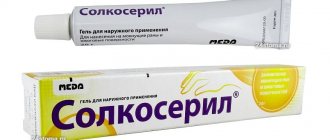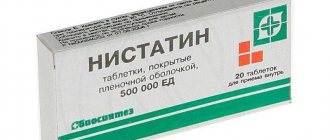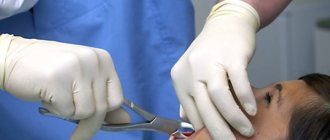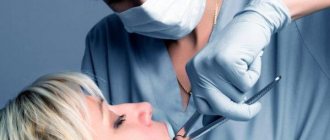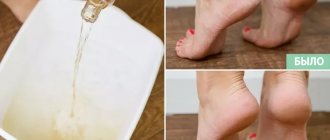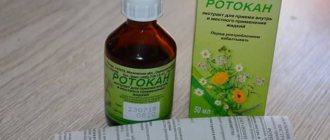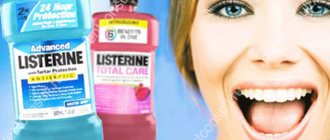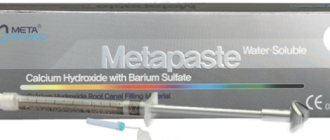Compound
The composition of 1 ml of solution for injection includes 42.5 mg of the active substance solcoseryl (deproteinized dialysate from the blood of dairy calves) and water for injection as an auxiliary component.
1 g of eye gel contains 8.3 g of the active substance solcoseryl (deproteinized dialysate from the blood of dairy calves) and auxiliary ingredients: sodium carboxymethylcellulose, sorbitol, water for injection, benzalkonium chloride.
1 g of Solcoseryl ointment contains 2.07 mg of the active substance solcoseryl (deproteinized dialysate from the blood of dairy calves) and a number of auxiliary components: methyl parahydroxybenzoate, propyl parahydroxybenzoate, cetyl alcohol, cholesterol, white petrolatum, water for injection.
Dragee Solcoseryl
The next item on our list is dragees (tablets in a blister of 0.1, 0.2 or 0.04 g). This form of release of the drug is effective in the following cases:
- elimination of the consequences of bedsores, including necrosis of individual tissue areas;
- restoration of skin after burns and ulcers, healing after transplantation;
- for recovery after heart attacks and strokes, other cerebral circulatory disorders;
- during recovery from open and closed craniocerebral injuries.
It is used either in combination with topical medications or as the next stage of treatment. They drink pills three times a day. Single dose - 0.1 g.
pharmachologic effect
Solcoseryl is a medicine that affects mainly metabolic processes in tissues. They activate tissue metabolic processes, improve trophism and stimulate tissue repair and regeneration when exposed to damaging factors.
Solcoseryl in injection form belongs to the pharmacotherapeutic group of hemodialysates and hemofiltrates, ointment and jelly - to the category of drugs used to treat wounds and ulcers (including poorly healing ones), gel - to the category of drugs used to treat ophthalmological diseases.
The use of Dimexide and Solcoseryl in cosmetology
Is Solcoseryl effective in cosmetology? The question is ambiguous. It is actively used with other substances. The most popular complex remedy is the combination with Dimexide. Usually beauty requires sacrifices, including financial ones. But not in this case. Both substances are commercially available and inexpensive. However, it should be remembered that such a compound can theoretically cause allergies. Therefore, you should not take risks and immediately apply it to your face. A standard elbow bend test will let you know if this option is right for you. If yes, then you have saved a lot of money on various procedures performed in salons. Today, many experts recommend Solcoseryl for wrinkles as a replacement for expensive drugs.
Making a face mask is simple. You must first dissolve 5 ml of Dimexide in 1/3 cup of boiled water. Wipe your face with the resulting solution. Now Solcoseryl should be applied to it. Leave the mask for an hour, but do not forget to spray it with water so that it does not harden. To remove, use a regular damp swab and then a night cream. Small wrinkles really smooth out after this.
Recipes for hair using solcoseryl:
| Recipes | Description |
| Strand restoration mask | Compound:
Preparation: The vitamin must be purchased in liquid form, and combined with Dimexide, then add egg yolks. Coconut oil can be replaced with any other oil you have at home. Mix and apply to hair strands. After 15 minutes, wash off |
| Hair shine product | Compound:
Preparation: Mix the medicinal ingredients together, and then add oil to them. Distribute the resulting mixture on the strands, creating a “greenhouse effect”. After three hours, wash off the composition. To increase the effectiveness of the procedure, you need to perform it twice a month. After this course, the strands will become silky and soft. |
| For curl growth | Compound:
Preparation: All components are taken in equal quantities, depending on the length of the curls. For medium hair, it will be enough to take 2 tsp of each ingredient. All of the listed components of the mask must be mixed and then distributed evenly over the strands. Thoroughly rub the mixture into the roots. Leave for one hour, rinse under running water |
Will this substance help with deep wrinkles on the face? The effect of it is about the same as that of any other cream. There is no miracle and there never will be. The reason for the “bummer” lies in the fact that the drug does not penetrate through the dense layers of healthy skin. Its main purpose is wounds and ulcers that do not have any protective covering. The molecules of the compounds included in the composition are too large to penetrate too deeply. Moreover, if you have oily skin, you will only make things worse. What do the “experts” say? They refer to the fact that Dimexide performs the transport function. Is it so? No, he cannot perform a miracle in the spirit of Moses. Therefore, the molecules could not penetrate deep into the tissues and still cannot. Perhaps this “canard” was started by sellers or someone else.
By the way, it is generally better not to apply Dimexide to the skin of the face. When using it, dermatitis, itching, swelling and other unpleasant consequences often occur. Not to mention the nasty smell. It is unlikely that you will be able to sit with such a mask on your face, breathing calmly through your nose.
Pharmacodynamics and pharmacokinetics
The main component of Solcoseryl preparations are fractions of the blood of calves with natural low-molecular substances included in their composition, the molecular weight of which does not exceed 5000 daltons.
To date, its properties have only been partially studied. In vitro tests, as well as preclinical and clinical studies, have shown that calf blood extract:
- promotes the restoration and/or maintenance of aerobic metabolism and oxidative phosphorylation processes, and also ensures the replenishment of cells that do not receive sufficient nutrition with high-energy phosphates;
- in vitro enhances the utilization of oxygen and activates the transport of glucose into tissues and cells suffering from hypoxia and metabolically depleted;
- helps improve repair and regeneration processes in damaged tissues that do not receive sufficient nutrition;
- prevents the development or reduces the severity of secondary degradation and pathological changes in reversibly damaged cells and cellular systems;
- in in vitro models activates collagen synthesis;
- has a stimulating effect on the proliferation (reproduction) of cells and their migration (in in vitro models).
Thus, Solcoseryl protects tissues that are in a state of oxygen starvation and nutritional deficiency, and accelerates the processes of their restoration and healing.
Solcoseryl eye gel is a dosage form that was developed specifically for the treatment of damage to the stroma of the cornea.
The gel-like consistency of the product ensures its uniform distribution on the cornea, and good adhesive properties allow it to remain on it for a long period of time. The use of eye gel accelerates the restoration of damaged tissues and prevents scarring.
The rate and extent of absorption, distribution, as well as the rate and route of elimination of the active substance from the patient’s body cannot be determined using conventional pharmacokinetic methods, since protein-free calf blood extract has pharmacodynamic effects that are characteristic of molecules with different chemical and physical properties.
In the process of studying the pharmacokinetic characteristics of Solcoseryl solution in animals, it was found that after a bolus injection, the effect of the drug develops within half an hour. The effect lasts for three hours after administration of the solution.
Solcoseryl ointment – price in the pharmacy, composition analysis
You will not like the cost of this drug. If 1-2 years ago it could be bought for 500-700 rubles, now the price for Solcoseryl ointment in a pharmacy will be from 2600 to 3000 rubles. This cost is indicated for January 2022 (and the drug is not available in many pharmacies), but below we will also talk about cheaper indirect analogues of this drug. Solcoseryl in the form of an ointment is available in aluminum tubes of 20 g and is sold in pharmacies without a prescription.
Solcoseryl ointment: composition
| Active substances (in 1 g of ointment) – → deproteinized dialysate from the blood of healthy dairy calves (in terms of dry matter). | 2.07 mg |
| Excipients - cholesterol, cetyl alcohol, white petrolatum, distilled water, as well as preservatives - methyl parahydroxybenzoate (E 218) and propyl parahydroxybenzoate (E 216). |
Composition analysis - the main and only active component of this drug is a deproteinized dialysate from the blood of dairy calves. This substance is very rich in low molecular weight organic compounds - amino acids, glycolipids, as well as oligopeptides and nucleosides. All these components, acting on damaged tissues, accelerate the healing processes in them. Studies have shown that the rate of regeneration when using this drug increases by approximately 30%.
Due to the large amount of organic components in the composition, the use of preservatives is also required. These are E 218 and E 216 (methyl parahydroxybenzoate and propyl parahydroxybenzoate), which can be classified as parabens. You need to pay attention to this point if you have allergic reactions to cosmetics or oral hygiene products, or if you have increased allergies in general.
Solcoseryl: analogues
It is impossible to find analogues for Solcoseryl ointment in Russian pharmacies, because the only drug with a similar composition, Actovegin ointment, is no longer imported into Russia. But there are several drugs with a completely different composition that can also speed up the healing of skin damage. We are talking about scratches, abrasions, cracks, cuts, wounds, minor burns, bedsores, etc. If there are wounds, a doctor should prescribe such drugs (after examining the wound and determining the risk of infection).
Among drugs for external use that accelerate wound healing (drugs from the “regeneration stimulants” group), we can recommend the following drugs:
- OLAZOL – the drug is made on the basis of chloramphenicol, sea buckthorn oil and benzocaine (anesthetic), and it is produced in a convenient aerosol form. It not only accelerates wound healing, but also has an antimicrobial and analgesic effect (hence Olazol is also suitable for wet, infected wounds). In turn, Solcoseryl ointment does not have an antimicrobial effect, and therefore it can only be applied to clean, dry wounds. The cost of the drug is only about 220 rubles.
- BEPANTEN –This line of drugs contains 5% dexpanthenol - a precursor of vitamin B5, which stimulates skin regeneration. If you have an uninfected dry wound under a crust (without a wet discharge), then any of the following forms of the drug will suit you - Bepanten cream or Bepanten plus cream. These drugs are usually applied 2 times a day - rub in with gentle massaging movements.
But if we are talking about wet wounds, which always have a risk of infection, only Bepanten Plus cream is suitable for you (the same version of the drug is preferable for cuts, scratches and abrasions). The cream contains dexpanthenol + antiseptic chlorhexidine 0.5%, which provides a pronounced antimicrobial effect. On wet wounds, the drug is applied on turundas under a bandage - 2 or more times a day, but shallow cuts and scratches can be treated openly. The cost of the Bepanten line of drugs ranges from 400 to 470 rubles per 30 g tube (there are also tubes of 50 and 100 g).
- METHYLURACIL ointment - this drug is also capable of slightly accelerating the regeneration processes of wounds on the skin, but much weaker in comparison with Solcoseryl ointment.
The only advantage of the drug is its very low price (a 25 g tube costs only 50 to 100 rubles). For dry, uninfected wounds, apply and rub in the product using gentle movements. If we are talking about moist, uninfected wounds, then the drug is applied on the wounds under a bandage. The frequency of changing dressings will depend on the depth/area of the wound surface, the amount of wet discharge from the wound, etc. Methyluracil ointment does not have an antiseptic effect and therefore there is a risk of suppuration of wet wounds when using it (to reduce the risk of suppuration, it is necessary to pre-treat the wound with antiseptics).
Indications for use
Solcoseryl injections - what are they for and what groups of patients are they prescribed for?
Solcoseryl in ampoules is indicated for patients who have been diagnosed with occlusive peripheral artery disease of the third or fourth degree according to the Fontaine classification and who have contraindications or intolerance to other vasoactive drugs.
It is also prescribed to patients with chronic venous insufficiency , which is accompanied by the formation of treatment-resistant trophic ulcers , as well as to patients with disorders of cerebral metabolism.
What is Solcoseryl ointment and jelly for?
The use of ointment and jelly is advisable for the treatment of minor injuries (for example, abrasions or cuts), frostbite, first and second degree burns (thermal or solar), difficult-to-heal wounds (for example, trophic skin disorders of venous etiology or bedsores ).
Indications for use of eye gel
Solcoseryl eye gel is recommended:
- for the treatment of mechanical injuries and erosive damage to the cornea and conjunctiva;
- to accelerate the healing processes of postoperative scars in the postoperative period (for example, after a cornea transplant, surgery to remove a cloudy lens, surgical treatment of glaucoma , etc.);
- for the treatment of burns of the cornea of various origins (thermal, chemical or radiation);
- for the treatment of ulcerative lesions of the cornea and keratitis of various etiologies;
- for dystrophic lesions of the cornea of various etiologies, including neuroparalytic keratitis , endothelial-epithelial dystrophy ( bullous keratopathy ), etc.;
- for the treatment of corneal xerophthalmia with lagofatalmos (non-closure of the palpebral fissure);
- to improve the tolerability of contact lenses and reduce the time of adaptation to them.
Indications for use of Solcoseryl dragees
The drug in the form of pills is taken to treat trophic and radiation ulcers , bedsores , gangrene , and chronic venous insufficiency . They are also prescribed to patients with gastric and duodenal ulcers and to patients who require skin and/or corneal grafting procedures.
Infusion Solcoseryl
This form is effective in the treatment of burns, ulcers and wounds, the healing of which is difficult for various reasons. Infusions are also used to eliminate intoxication of the body and remove a person from alcoholic delirium. For each patient, the dosage is selected depending on the condition. The classic option is several procedures per week. Inject from 250 to 500 ml into a vein or artery at a rate of 20 to 40 drops per minute.
However, Solcoseryl should not be mixed with other drugs. Each bottle can only be used once after opening.
Contraindications
Administration of the solution is contraindicated in patients with known hypersensitivity to calf blood dialysates. The solution is also contraindicated for atopy and for persons allergic to milk.
Since the ointment, jelly and solution contain derivatives of parahydroxybenzoic acid , which are used as preservatives, as well as trace concentrations of benzoic acid in free form, it is not used in the presence of allergic reactions to the above substances.
Ointment and jelly should be prescribed with caution to persons with a predisposition to allergic reactions.
A contraindication to the use of eye gel is hypersensitivity to its components. Since the eye gel can cause temporary visual impairment, you should not drive a car or operate potentially dangerous machinery for half an hour after its use.
Solcoseryl ointment: instructions and application diagram
Pharmacological action of the drug - as we said above: the active substance of the ointment is deproteinized (devoid of protein) hemodialysate, which contains a spectrum of low-molecular components of cell mass and blood serum of dairy calves. Clinical studies have shown that thanks to this composition, Solcoseryl ointment has a wound-healing, regenerating, antihypoxic, membrane-stabilizing, angioprotective, and cytoprotective effect on damaged tissues.
In simple terms, this means that the drug has the following properties -
- accelerates wound healing (by about 30%),
- stimulates the proliferation of fibroblasts responsible for collagen synthesis,
- stimulates collagen synthesis in young growing tissues,
- activates metabolic processes in cells (increases oxygen consumption by cells, stimulates the transport of glucose into cells), which together allows damaged cells of the body to regenerate and recover faster.
Solcoseryl ointment: official instructions for use (download in PDF)
Scheme and features of application –
Solcoseryl ointment should be applied in a thin layer directly to the wound surface 2-3 times a day. Before applying the ointment to the wound, it is necessary to treat it with an antiseptic solution using a clean gauze swab moistened with an antiseptic solution. After this, you need to wait until the wound dries and apply ointment. As antiseptics, you can use 3% hydrogen peroxide or antiseptic solutions -
- Chlorhexidine solution,
- Miramistin solution.
Important : remember that you should not apply the ointment to infected wounds, as well as fresh wounds with wet discharge! For wet wounds, Solcoseryl gel can be used, and after the wound dries and becomes covered with granulations or crusts, you can already switch to the ointment form of Solcoseryl. The latter, in addition, contains fatty components that will form a protective film on the wound surface (24stoma.ru).
After applying the ointment (if necessary), the wound can be covered with a gauze bandage. The use of the ointment should continue until its complete epithelization. If the healing of the wound has occurred with the formation of scar tissue, then in order to reduce the scar and make it more elastic, it makes sense to immediately start using a special cream for scars and scars.
Side effects
Administration of Solcoseryl IV or IM in very rare cases (their frequency does not exceed 0.1%) provokes the development of allergic or anaphylactic reactions, which are most likely caused by class E immunoglobulins.
If body temperature rises, urticaria , swelling and hyperemia at the site of drug administration, the use of Solcoseryl is stopped, and symptomatic treatment will be prescribed to eliminate the symptoms that appear.
Since the solution contains potassium, its administration may cause pain at the injection site.
When using Solcoseryl cream, a short-term burning sensation may be felt at the site of application. Discontinuation of the drug is required only in cases where the unpleasant sensation does not disappear for a long period of time.
In isolated cases, the use of jelly and ointment can cause the development of allergic reactions. If allergy symptoms appear, the use of these products should be discontinued.
Toxicological studies of Solcoseryl eye gel have shown the high safety of this drug when used for its intended purpose in accordance with the instructions.
After instillation of the product, a short-term burning sensation and mild irritation may be observed, which are not reasons for stopping treatment. Repeated instillations in rare cases provoke the development of allergic reactions (a similar effect is also observed during treatment with other ophthalmic drugs for topical use).
Special instructions for the use of Solcoseryl jelly
When treating contaminated and infected wounds, it is necessary to first use antiseptics and/or antibiotics for 2–3 days. Treatment with Solcoseryl jelly begins only after cleansing the wound. For difficult-to-heal ulcers, bedsores and severe burns, parenteral administration of the drug must be added to local treatment with Solcoseryl jelly. For varicose leg ulcers, the simultaneous use of a pressure bandage on the limb is mandatory. The drug can be used during pregnancy and breastfeeding.
Instructions for use of Solcoseryl (Method and dosage)
Solution for injection, instructions for use
In cases where the patient's condition allows, the drug is recommended to be used in the form of an injection solution diluted at least 50:50 with saline or glucose solution.
Solcoseryl in ampoules is intended for slow administration in the form of intravenous injections or infusions. If intravenous administration is not possible, the drug can be injected into the muscle.
Since the drug in its pure form is a hypertonic solution, it should be administered slowly.
For intravenous infusion, the drug should be pre-diluted with 0.25 l of 0.9% NaCl solution or 5% glucose solution. Solcoseryl solution is administered intravenously by drip. The rate of administration depends on the hemodynamic status of the patient.
Patients with occlusive disease of peripheral arteries of the third or fourth degree according to the Fontaine classification are shown daily injection into a vein of 0.85 g (or 20 ml of undiluted solution) Solcoseryl.
The duration of use is usually up to four weeks and depends on the clinical situation.
Patients with chronic venous insufficiency , which is accompanied by the formation of treatment-resistant trophic ulcers , are indicated for intravenous administration of 0.425 g (or 10 ml of undiluted solution) Solcoseryl three times a week.
The duration of the course of treatment should not exceed four weeks (it is determined depending on the nature of the disease).
To prevent the appearance of peripheral venous edema , therapy is supplemented by applying a pressure bandage using an elastic bandage. If the patient has skin trophic disorders, treatment is carried out by combining injections or infusions of Solcoseryl solution with the use of jelly, and then ointment.
Patients who have suffered ischemic or hemorrhagic stroke are prescribed daily intravenous administration of 0.425 or 0.85 g of Solcoseryl (10 or 20 ml of undiluted solution) as the main course. The duration of the main course is 10 days.
Further treatment involves daily administration of 85 mg (or 2 ml of undiluted solution) Solcoseryl for one month.
In severe forms of brain contusions, daily injection of 1000 mg of Solcoseryl into a vein (corresponding to 23-24 ml of undiluted solution) is prescribed for 5 days.
The drug is administered intramuscularly undiluted at a dose of 2 ml/day.
Solcoseryl jelly and ointment: instructions for use
Cream and ointment are intended for application directly to the wound surface. Before using these dosage forms, the wound is first cleaned using a disinfectant solution.
Patients with trophic ulcers , as well as in cases of purulent infection of wounds, require preliminary surgical treatment before starting treatment.
When using jelly and ointment for frostbite , as well as for treating ulcers and skin injuries, it is important to remember that only sterile dressings should be used to treat damaged areas.
The gel is intended for application to fresh (including wet) wounds and weeping ulcers. The product is applied in a thin layer to a previously cleaned wound surface two or three times a day.
To treat areas where epithelization has begun, the use of ointment is indicated. The use of jelly is advisable until pronounced granulation tissue begins to form on the damaged surface of the skin and the wound begins to dry out.
The ointment is used primarily to treat dry wounds. The product is applied in a thin layer to a previously cleaned wound surface once or twice a day. If necessary, cover the treated surface with a bandage.
The course of treatment with the drug in this dosage form continues until the wound heals and is completely healed with elastic tissue.
For patients with severe trophic damage to the skin and soft tissues, it is recommended to combine jelly and ointment with the injection form of Solcoseryl.
Experience with the use of jelly and ointment for children is limited.
The drug does not have such release forms as suppositories. However, in the complex therapy of chronic colitis (inflammation of the colon), microenemas with Solcoseryl jelly are often prescribed.
Before use, the jelly contained in the tube (all 20 g) is added to 30 ml of warm water and after the enema procedure, which is carried out to cleanse the intestines, it is administered daily for 10 days.
Solcoseryl eye gel, instructions for use
Unless otherwise instructed by the attending physician, the eye gel is instilled into the conjunctival cavity, one drop three or four times a day. It is recommended to use the product daily until complete recovery.
In particularly difficult cases, eye ointment can be used one drop per hour. If the patient is simultaneously prescribed eye drops and Solcoseryl eye gel, the gel should be applied approximately half an hour after the drops.
During the period of adaptation to contact lenses, the drug is instilled into the conjunctival cavity immediately before installing the lenses and immediately after removing them.
Dragee Solcoseryl: instructions for use
The instructions recommend taking 100 mg tablets three times a day.
Solcoseryl injections: what for
Any surgical intervention is accompanied by a violation of the integrity of the skin and tissues. If the operation involves the removal of some fragment of an internal organ, the body will require a long rehabilitation period, during which the body will be fully or partially restored. Solcoseryl in ampoules can be instantly delivered to tissues, shortening the recovery period. Injections allow you to mobilize all the internal forces of the body to heal wounds, cuts and sutures not only on the outside, but on the internal organs that remain after operations.
Special cases include the prescription of intravenous or intramuscular administration to patients after ophthalmological operations. Solcoseryl ensures active blood circulation, which accelerates the process of adaptation of the organ of vision in the postoperative period, and also reduces the risk of complications.
special instructions
Studies regarding the safety of using Solcoseryl solution for the treatment of children have not been conducted, therefore the drug is not recommended for the treatment of children under the age of 18 years.
Experience in treating children with the use of eye gel and topical dosage forms of the drug is also limited.
Solcoseryl in ampoules should be administered separately from other drugs (it is especially incompatible with phytoextracts). The exceptions are isotonic 0.9% NaCl solution and 5% glucose solution. It is also not recommended to dilute the product in potassium-containing solutions for infusion.
Eye gels are characterized by the ability to stick to contact lenses, so it is recommended to stop wearing lenses during treatment with the drug.
If allergic reactions associated with the use of the drug occur, you should immediately report them to your doctor. If the drug is used to treat an infectious disease of the cornea, therapy is supplemented with the prescription of appropriate antimicrobial agents.
Avoid contact of the gel with soft contact lenses as it may discolor them.
If necessary, treatment with Solcoseryl can be supplemented with antibacterial, vasodilating and other drugs.
Solcoseryl in cosmetology: for the face, hands, rough elbows and heels, for the skin around the eyes
In medicine, Solcoseryl preparations are used to accelerate the healing of damaged skin; in home cosmetology, they are used as a remedy for acne, stretch marks, and wrinkles. They are used to soften the skin, increase its turgor, improve complexion and eliminate acne .
In cosmetology, the ointment can be used as a stand-alone product (it is applied pointwise to problem areas, in the form of a mask once a week before bedtime and two to three times a week on the skin around the eyes), or in combination with other products, in particular with the drug Dimexide . Let's look at how to use these medications together.
For the face, Dimexide and Solcoseryl are used as follows: on the face, neck and décolleté, previously cleaned with peeling agents (you can also do alkaline peeling using tar soap, salt and soda), apply a solution of Dimexide with water, prepared in a ratio of 1:10 (enough dilute 5 ml (teaspoon) of Dimexide in 50 ml of water); Before the product has time to be absorbed, Solcoseryl ointment is applied to it in a thick layer.
If the gel is used in cosmetology, then the mask should be periodically sprayed with thermal water (you can also use regular water through a spray bottle). The mask is left on the face for about half an hour to an hour, then washed off and a light hypoallergenic cream is applied to the skin.
According to women who have tried this mask recipe on themselves, Solcoseryl ointment is more comfortable for the face than gel (after application, you don’t have to wash it off, just remove the residue with a napkin). In addition, it is not recommended to use a gel mask more than once a month.
Used as a remedy for wrinkles around the eyes, Solcoseryl ointment has proven itself to be a very effective remedy. Applying it like a regular cream, within a week you can see that the number of wrinkles and wrinkles has decreased, the skin has tightened and smoothed, and its color has become fresher and healthier.
Dimexide and Solcoseryl are no less effective against wrinkles, and perhaps even more effective. This is due to the ability of Dimexide to enhance the penetration of the active substance of drugs deep into the tissue. After using these products in combination, skin irregularities and imperfections disappear, and the effect of the mask is comparable to the effect of Botox .
The gel and ointment can also be used to soften rough skin on the elbows and heels. It is best to apply them to problem areas before bed.
What is Solcoseryl ointment used for?
The drug is based on deproteinized dialysate obtained through special processing from the blood of calves. This substance is often used in medicine in countries such as China, Korea, and the entire CIS. It has proven itself to be an effective remedy that can:
- enrich tissue cells damaged due to hypoxia with oxygen and glucose;
- start tissue repair processes;
- activate healthy cell division processes;
- increases the level of energy produced by cells;
- protects the skin from external damage by forming a film on its surface;
- triggers the production of collagen by tissues.
Based on the activity of the drug, the drug can be used for:
- frostbite;
- psoriasis;
- anal ring cracks;
- cuts;
- abrasions;
- scratches;
- bedsores;
- acne marks;
- dermatitis;
First of all, to achieve the best effect, it is necessary to start therapy in the early stages of the problem.
Analogues of Solcoseryl
- Aekol
- Acerbin
- Bepanten
- Shostakovsky Balm
- Wundehill
- Depanthol
- Contractubex
- Pantekrem
- Pantexol Yadran
- Panthenol
- Pantestin
- Hepiderm Plus
- Echinacin Madaus
Indications for the drug Solcoseryl
Solcoseryl solution for injection.
Occlusive diseases of peripheral arteries in stages III–IV according to Fontaine in patients with contraindications/intolerance to other medications;
chronic venous insufficiency, accompanied by trophic disorders (Ulcera cruris), in cases of their persistent course;
disorders of cerebral metabolism and blood circulation (ischemic and hemorrhagic stroke, traumatic brain injury).
Solcoseryl gel, ointment.
Minor damage (abrasions, scratches, cuts).
1st and 2nd degree burns (sunburn, thermal burns).
Frostbite.
Difficult-to-heal wounds (including trophic ulcers and bedsores).
Reviews of Solcoseryl
Almost all reviews left on the forums about injections, eye gel, jelly and Solcoseryl ointment are positive. Rare negative reviews are due largely to the fact that the drug provoked allergic reactions associated with intolerance to its active component.
Reviews of Solcoseryl gel and the drug in the form of an ointment allow us to conclude that these drugs effectively cope not only with minor scratches and minor burns, but also help cure difficult-to-heal wounds and ulcers.
The effectiveness of the ointment in cosmetology is also highly appreciated. Reviews of Solcoseryl ointment for the face indicate that this is truly an indispensable product for those who want to quickly get rid of wrinkles, acne, and simply improve the color and tone of the skin.
Gel is no less effective against wrinkles, but cosmetologists believe that it should not be used as part of masks too often (optimally - once a month). The ointment can be used as a regular cream.
The effectiveness of Solcoseryl against wrinkles increases when combined with Dimexide , which is due to the latter’s ability to improve the penetration of the active substance deeper into the skin.
Solcoseryl eye gel
The eye gel has proven itself to be excellent. This ophthalmic drug is used in the following cases:
- recovery from eye surgery, including laser vision correction, keratoplasty, glaucoma treatment and cataract removal;
- recovery after radiation, ultraviolet, chemical, thermal and other injuries and burns of the cornea;
- in the complex treatment of fungal, bacterial or viral keratitis;
- for corneal ulcers;
- for various forms of corneal dystrophy;
- to reduce the time it takes to get used to contact lenses.
Solcoseryl gel is very easy to use. It is necessary to instill the gel into the eye conjunctival sac. 1 drop 4 times a day is enough. If we are talking about serious diseases and injuries of the eye, the procedure is repeated every hour.
When getting used to hard lenses, you can apply a small amount of gel directly to the lens before putting it on. After you remove it, one drop is instilled into the conjunctival sac. If we are talking about soft lenses, then they do not need to be wetted. The gel is dripped directly into the eye before going to bed, when the lenses are removed.
The big advantage of this form is that it goes well with a large number of remedies for the treatment of eye diseases. The main condition for use is a gap of 15-20 minutes between the use of drugs. First, the main remedy is used, then Solcoseryl. This is necessary to ensure that the metabolites contained in calf blood do not interact with various antiviral drugs, such as acyclovir.
Solcoseryl price, where to buy
The price of Solcoseryl gel 20 g in Russia is about 2,600 rubles.
The average price of Solcoseryl in ampoules of 5 ml No. 5 in Ukrainian pharmacies is about 500 hryvnia.
- Online pharmacies in RussiaRussia
- Online pharmacies in UkraineUkraine
- Online pharmacies in KazakhstanKazakhstan
LuxPharma* special offer
- Solcoseryl ointment tube 20g
RUB 2,170 order - Solcoseryl injections/solution for injection (Solcoseryl ampoules) 42.5 mg/ml 5 ml No. 5
RUR 4,780 order
Pharmacy Dialogue
- Solcoseryl gel (tube 20g)Legacy
RUB 2,633 order
show more
Pharmacy24
- Solcoseryl 5 ml No. 5 injection solution Legacy Pharmaceuticals, Sweetseland GmbH, Switzerland
515 UAH. order - Solcoseryl 4.15 mg/g 20 g gel Legacy Pharmaceuticals, Sweetseland GmbH, Switzerland
164 UAH order
- Solcoseryl 2.07 mg/g 20 g ointment Legacy Pharmaceuticals, Sweetseland GmbH, Switzerland
136 UAH order
- Solcoseryl 42.5 mg/ml 2 ml N25 injection solution Legacy Pharmaceuticals, Sweetsland GmbH, Switzerland
919 UAH. order
PaniPharmacy
- Solcoseryl ampoule Solcoseryl injection solution ampoules 2ml No. 25 Switzerland, Legacy Pharmaceuticals Switzerland
950 UAH order
- Solcoseryl gel Solcoseryl jelly 10% 20g Switzerland, Legacy Pharmaceuticals Switzerland
161 UAH order
- Solcoseryl injection solution ampoules 5 ml No. 5 Australia, Legacy Pharmaceuticals Sweetsland GmbH
476 UAH. order
- Solcoseryl ampoule Solcoseryl injection solution ampoules 5ml No. 5 Switzerland, Legacy Pharmaceuticals Switzerland
545 UAH. order
- Solcoseryl jelly 10% 20g Australia, Valeant Pharmaceuticals Sweetsland
181 UAH order
show more
Solution for intravenous and intramuscular injections
What is Solcoseryl injection solution used for? It is effective for:
- venous diseases causing the appearance of trophic ulcers;
- traumatic brain injuries;
- strokes (hemorrhagic and ischemic);
- diseases of occlusive arteries, if the patient has contraindications and allergies to other drugs.
A solution is used for intravenous and intramuscular infections, diluted with glucose or saline in a ratio of 1 to 1.
Attention! Intravenous administration of an undiluted solution! It should be administered very slowly to avoid complications associated with the removal of potassium from the body.
The volumes and rate of infusion when administering 100 ml or more are determined individually for each patient. The choice of physician is influenced by hemodynamic status. In some situations (severe forms of trophic lesions) it is necessary to combine local application and injections of Solcoseryl.
How are injections and infusions used in each case?
- For venous insufficiency with trophic ulcers, a four-week course is used. The solution is administered in 10 ml doses, repeating the procedure three times a week.
- For the successful treatment of stage II occlusive diseases affecting peripheral arteries, infusions are used. Up to 250 ml is administered intravenously. Or 20-40 drops/min. few times a week. 20 such infusions are recommended. In stages III and IV, intravenous daily injections of 20 ml or drip administration of a solution diluted with an isotonic solution or 5% glucose are recommended.
- In the treatment of strokes, intravenous administration of 10 or 20 ml is used in a 10-day course. Next, 2 ml per day is administered for a month.
- For severe brain contusions, 1 g per day is administered intravenously. The duration of the course is 5 days.
Interaction
Solcoseryl injections should not be mixed when administered with other medications, especially with phytoextracts.
The pharmaceutical incompatibility of Solcoseryl in the form of an injection solution with parenteral forms has been established:
Ginkgo biloba extract,
naftidrofuryl,
bencyclane fumarate.
As solutions for diluting Solcoseryl injection, only isotonic sodium chloride solution and 5% glucose solution should be used.
The interaction of Solcoseryl with other topical medications has not been established.
